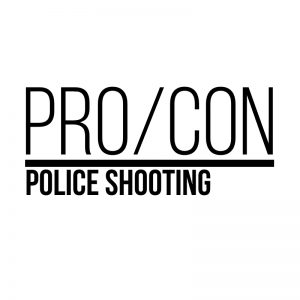PRO: A built-in practice
April 23, 2018
Police shootings and their connection with race is back in the news after yet another unarmed African American male in San Francisco, Stephon Clark, was shot in his grandmother’s backyard. Police violence is not, like some may argue, an issue of isolated cases, but a deathly trend true to the African American community for over 60 years.
Disparities in race with regard to police shootings aren’t hard to find; in fact, it is almost quite literally black and white.
According to the FBI’s 2012 report, 31 percent of police shooting or killing victims were black, despite making up only 13 percent of the nation’s population. And according to the Guardian’s project, The Counted, unarmed victims killed by police are more likely to be minorities.
“It’s the way that police are trained to see communities of color as war zones and to behave like occupying force,” writes the executive director of the Center for Constitutional Rights, Vincent Warren.
Justification from the other side comes from violent crime statistics—since African American have a greater homicide rate than other groups and are thought to be more likely to be criminals, they are therefore more likely to be shot. However, many of these victims are stopped because of petty, and often, nonviolent offenses, such as traffic violations or stealing cigarettes. This was the case with Trayvon Martin (2012), Michael Brown (2014), Eric Garner (2014), Philando Castille (2016), Alton Sterling (2016) and many, many more. All were unarmed, and all police officers involved were either acquitted or not indicted for their actions.
It would be less concerning if the allegations of police abuse were specific to one city or state, however, they are not. A 2014 Department of Justice report discovered that Cleveland’s police department regularly used excessive deadly force on its majority black residents. In another investigation by the DOJ, racial bias patterns were found in Ferguson’s police department “typically in an effort to ticket as many low-income black residents as possible in an attempt to raise local budget revenue through fines and court fees.”
Similar conclusions were drawn from reports regarding Los Angeles, New Orleans, New Mexico and Oregon police departments.
It’s not to say every instance involving a white officer and a black victim has to be racial. In many cases, the officer might rightfully sense danger, and the person in question may be a criminal. However, what an officer senses as danger is incredibly subjective and police can use deadly force if they merely perceive a “threat,” whether it is reasonable or not.
These disparities aren’t exclusive to police shootings. In fact, they reflect the more rampant racial inequalities in the law enforcement system as a whole. It is not hard to find the statistics showing that blacks are much more likely to be arrested for drugs, despite similar rates of drug use between the races. In addition, the prison population is filled with blacks in disproportionate amounts and that blacks represent almost half of defendants who are later exonerated after being convicted of crimes.
While all the evidence keeps on stacking up, the black community is told to remain silent and trust a justice system that has failed over and over again, from Rodney King in 1991 to Stephon Clark today.




